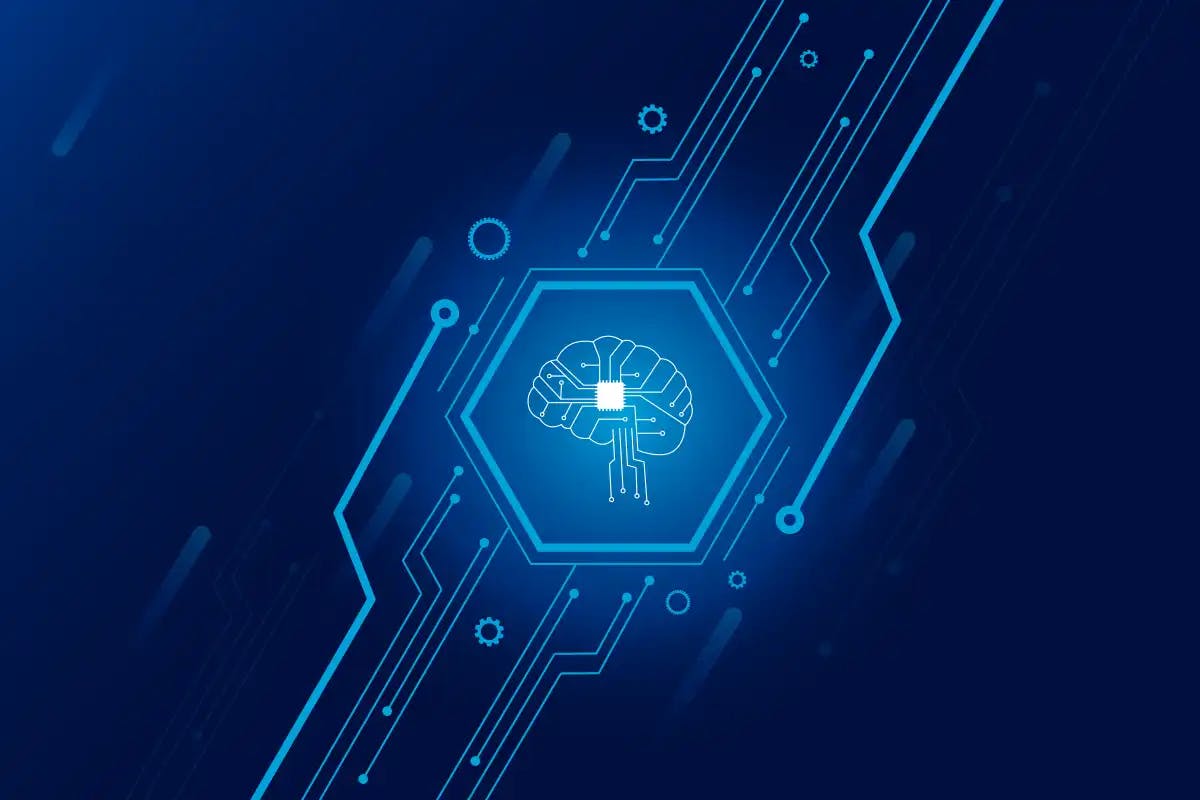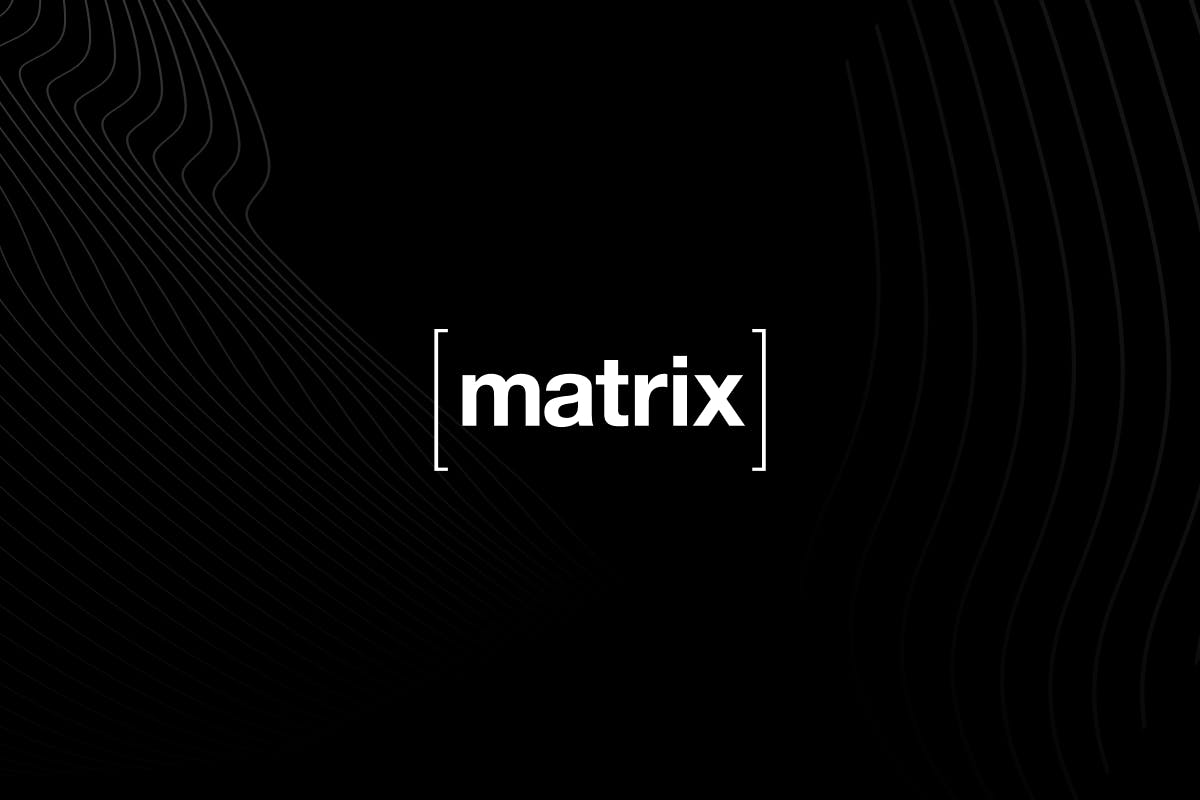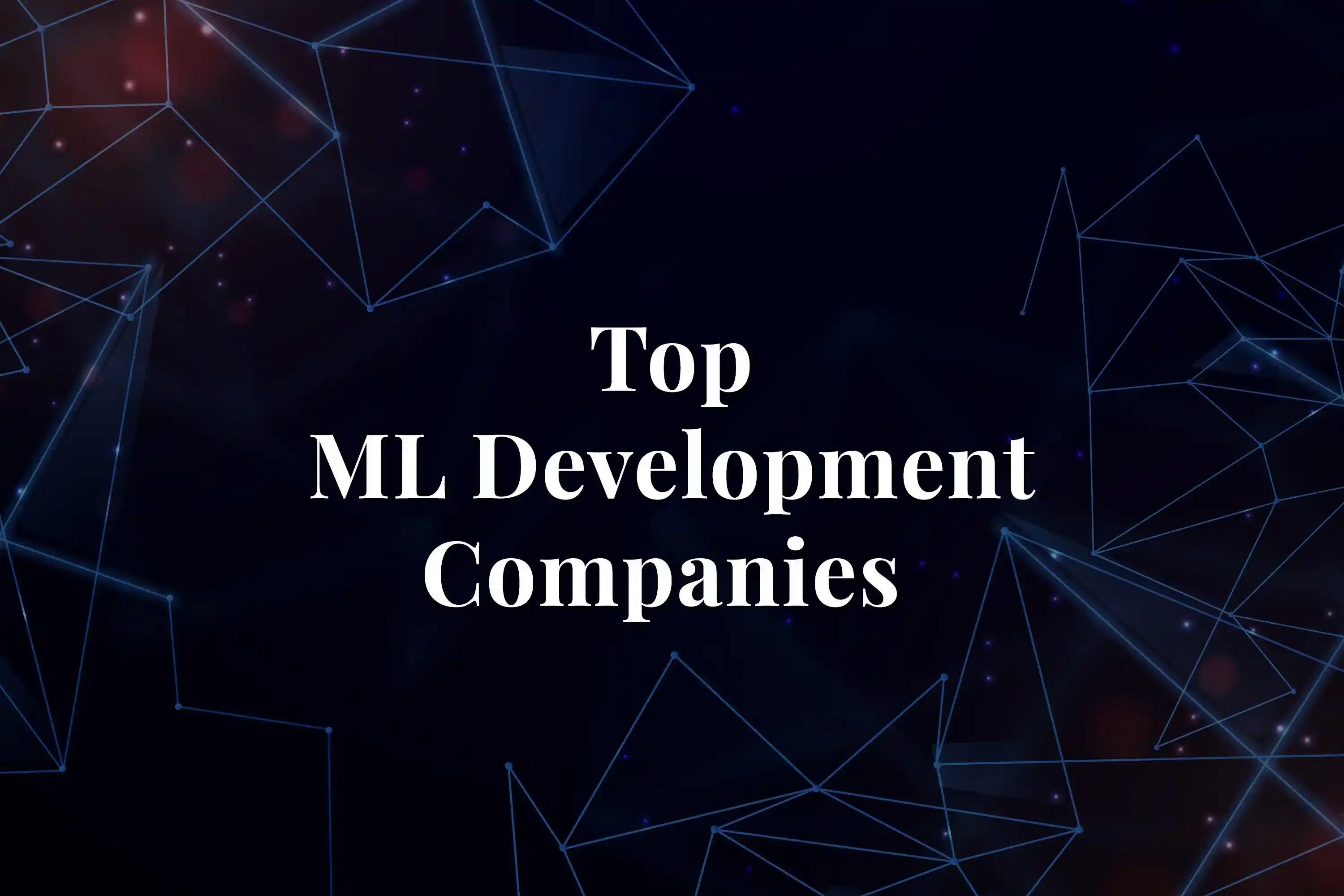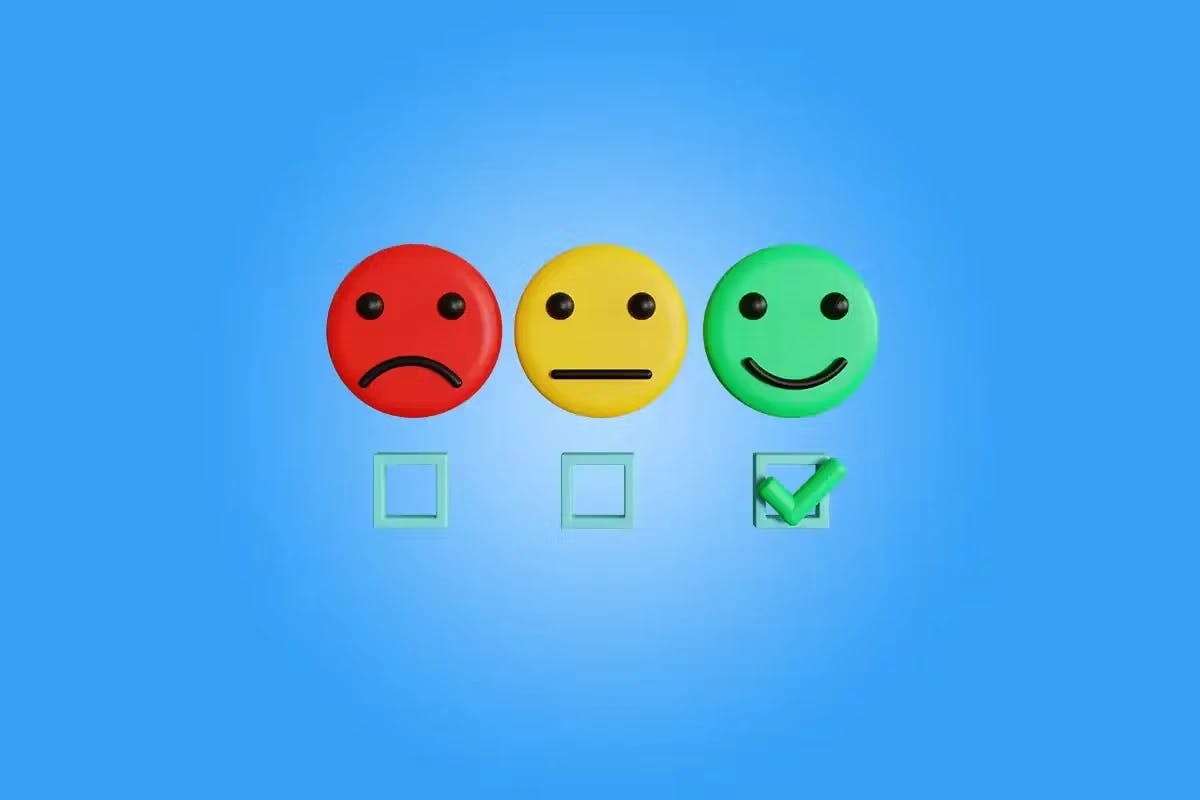
,
In the field of Natural Language Processing (NLP), large language models have changed how machines work with human language. Models, like GPT-3 and later ones, have shown great skills. They can translate language, summarise text, answer questions, and even write creatively. But there's a hidden part that's vital for these models to work well – tokenization.
We often forget about tokenization. But it's the step where text is broken into smaller pieces called tokens. This article throws light on tokenization in large language models. It shows why it's important and how it helps models manage the bulk of written data.
Tokenization, in simple terms, is turning a string of text into parts or 'tokens.' Tokens might be whole words, fragments of words, or even single letters! What you pick depends on how detailed you want your tokenization to be. Its purpose? To help computers process text better by splitting it into its basic bits!
What is Tokenization in NLP (Natural Language Processing)?
Turning uncut text into smaller bits is called tokenization, a key part of natural language processing (NLP) applications. These small bits are called tokens. Tokens might be words, pieces of words, or even single letters, depending on the language or NLP task at hand.
Why is this important? It helps make the raw text easier to handle for NLP systems. Once the text is broken down into tokens, NLP applications can understand the language better. This understanding helps pull out key details and insights from the text, and this is vital for many NLP uses.
Role of Tokens in Text Processing
Tokens are key parts of how NLP models work. They are the foundation for understanding language and the way they are ordered and their context aids machines in understanding the text. Tokens offer a structured view of text that aids in tasks like emotion detection, translation, and creating text.
A key part of tokenization is how it helps spot feelings. Emotions in words mostly come from the words we choose, how we put our sentences together, and the situation. Tokens are great at grabbing all these pieces, that way NLP algorithms can tell what emotional hints are there in the text. They can tell about the vibe behind a product review or the mood in a post on social media. This skill is very useful for things like sentiment analysis, keeping an eye on social media, and looking at what customers say. Knowing the emotions in the text is super important.
In simple terms, tokenization is like a tool for machine translation. It helps change words and phrases from one language to another while keeping the same meaning. Due to tokens, language models can break down language barriers, making talking easier worldwide. Also, tokenization is handy in creating sentences that make sense and fit the context. Tokens can help, whether in making chatbot responses sound more human or helping a word processor finish your sentences. This makes the text made by the NLP model even better!
Role of Tokenization in Large Language Models
What is Tokenization for Large Language Models?
Big Text Models (BTMs), like GPT-3, handle lots of text data. They split the huge amount of text into parts, which is nothing, but considered as tokens. Then, these tokens are used as input. These models train on a wide array of texts. Cutting up the text into tokens helps them deal with enormous datasets effectively.
How Tokenization Allows Models to Handle Large Datasets?
Tokenization is just like finding a hidden key. This key lets us train large language models. Big or "Large-scale" language models are the brain! It transforms text into tokens. Tokens help manage tons of data, splitting it into small pieces. Now, the model's brain power can handle it. So, no information is too big to deal with. Tokenization allows us to train with huge amounts of text.
Think of tokenization as a smart breaker, splitting huge data sets into tiny, easier to handle pieces, called tokens. It chops up text, which lets even the biggest and most tricky text collections be used by language models. This big deal in NLP is it gives the capability to work with giant datasets, and this boosts its language understanding and knowledge-sharing abilities.
Tokenization is essential when dealing with big datasets. It empowers language models to deal with a lot of text and learn human language nuances. It makes handling large data easier and aids the training process. More data means language models can understand more, be more sophisticated, and be aware of the context. This helps language software with tasks like chatbots, translation, and content creation. In short, tokenization helps language models reach their full potential with the increasing amount of available text data.
Benefits of Tokenization for Large Language Models
Splitting text into tokens brings many benefits for large language models. It allows for handy data display and handling, meaning that models can better understand language trends and make sense of text. Plus, it helps in dealing with memory and computing power, making models stronger and easier to grow.
Tokenization helps make language models work well with different apps. It's like having a standard language that makes it easy to share data between various text analysis tools. From healthcare to banking, language models can easily fit in as they understand the orderly tokenized input. This helps smooth conversation between different systems and text analysis models.
Limitation of Tokenization for Large Language Models
Tokenization is an important step, but it has its drawbacks. A big issue is that tokenization can result in missing information. This often happens with languages or texts that depend heavily on context, subtle meanings, or unusual formats. Tokenization also has trouble managing words not in its vocabulary or language based on characters.
What are Language Patterns in NLP?
Language has repeating structures and links. Structures and links can be about grammar, meaning, and the connections between words or phrases. In Natural language processing (NLP), seeing and getting these patterns is needed for doing tasks. Some tasks are, tagging words, recognizing named entities, and analysing sentiment.
How Tokenization Helps in Recognizing and Learning Patterns?
Tokenization helps in understanding how language works. It splits text into bits called tokens. This way, NLP models can look at word sequences and how they connect. This step makes it easier to pull out key parts and patterns from the text. It's super important for things like figuring out feelings from text and creating a new language.
Applications of Language Patterns
Language patterns play a key role in NLP. They help in tasks like finding information, classifying text, translating languages, and creating chatbots. In translation, recognizing the language patterns of both initial and final languages helps create correct translations. However, in the context of NLP and ML, Language patterns have some popular applications across different domains such as:
- Chatbots and Virtual Assistant apps help in information retrieval, customer support, etc. by understanding and generating human-like responses.
- Sentiment Analysis apps help in customer feedback analysis, social media monitoring, brand reputation management, etc. by determining the sentiment behind a piece of text.
- Google Translate is a good example of a Machine Translation app that translates text from one language to another language automatically.
- Text Summarization apps help in document summarization, news posts, etc. by identifying vital content and generating concise summaries of lengthier texts.
Other than those mentioned above, apps like Search Engines, Speech Recognition, Named Entity Recognition (NER), Text Classification, Code Generation, and more are some popular apps that make NLP a must-have component of intelligent systems and applications development.
Tokenization Techniques of LLMs
Common Tokenization Methods Used in NLP
Tokenization is a crucial preprocessing step in NLP that uses different splitting approaches, from basic space-based breaking to complex tactics like fragment breaking and binary-code pairing. The kind of breaking method to use totally relies on the NLP task, language, and data set you're working with. Here are some common Tokenization Methods Used in NLP mentioned below:
1. Word Tokenization breaks sentences into words and it is one of the most common form of tokenization:

2. Sentence Tokenization breaks text into sentences.

3.Subword Tokenization divides words into smaller units. This is particular for morphological variations.

4.Character Tokenization breaks text into individual characters.

4. Byte Pair Encoding (BPE) is an iterative algorithm that usually combines the most frequent pair of consecutive tokens to create a vocabulary.

Other than the above mentioned, there are NLTK and SpaCy Tokenizers, WordPiece Tokenization, Regular Expression Tokenization, Treebank Tokenization, and more.
Comparing Different Tokenization Strategies
Various ways of breaking down text have pros and cons. Splitting words based on spaces is simple, but might not work well for languages that stick words together or change words. Methods like Byte-Pair Encoding (BPE) and WordPiece are better for languages with intricate grammar. Checkout below image for more understanding:
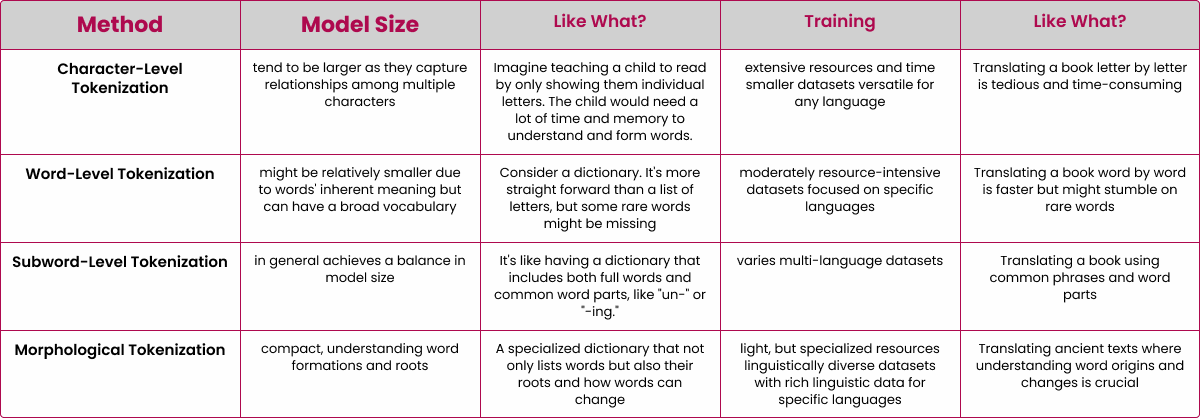
How Tokenization is an Essential Step in Text Preprocessing?
Tokenization acts as the base for text preprocessing. It changes everyday text into data that is easy to manage. It preps the text for NLP activities such as understanding emotions, classifying text, and finding information. In addition, Tokenization in text preprocessing is a must for several reasons:
- Tokenization in Text Normalisation can help to manage contractions, linguistic variations, and possessives to deliver a standardised representation of the text.
- Through Statistical Analysis, Tokenization analyses text data for the computation of metrics such as word frequencies to understand the distribution of terms in a corpus.
- Tokenization in sequential models like recurrent neural networks (RNNs) or transformers helps to create input sequences in order to capture sequential dependencies.
- Handling Special Characters like punctuation, alphanumeric elements, etc. becomes easy with Tokenization.
- In addition, tokenization can help to provide essential inputs to learn relationships, semantics, and patterns to models within text data.
Cleaning and Normalising Text Using Tokenization
Stacking tokenization with text cleaning and making text normal improves text quality. It's about taking out unnecessary noise, special characters, and pointless information. It also involves making text standard by using different methods. Being a vital step in NLP tasks, Cleaning and normalising text helps to minimise the count of unique tokens present in the text. In addition, it also removes the variations in a text and also cleans the text by eradicating redundant information. Stemming and lemmatization are two well-known methods used for normalisation.
Tokenization's Role in Feature Engineering
In NLP, feature engineering plays a vital role and depends a lot on tokenization. NLP workers break down the text into tokens. They then pull out useful features that help machine learning models work better. Tokenization in feature engineering mainly includes changing the existing features or creating new features to enhance the ML model’s performance. Below are some examples of the contribution of tokenization in feature engineering:
- Bag-of-Words (BoW) Representation
- Text Representation
- Sequence Models and N-grams
- Handling Categorical Data
- Handling Textual Data Variability
- Term Frequency-Inverse Document Frequency (TF-IDF) Representation
Tokenization's Impact on Model Training
- How does Tokenization affect model Training?
Tokenizing is fundamental in training sizable language algorithms. It outlines the details of input data and the vocabulary applied during pre-learning. The tokenizing method chosen can greatly affect an algorithm's aptitude to grab language patterns and learn from training data. - Tokenization Parameters and Influence on Model Performance
Tweaking token specs, like vocabulary size and token depth, can affect an algorithm's output. Using less vocabulary could improve speed but hamper the algorithm's grasp of rare or OOV words. Conversely, using more vocabulary enhances coverage but needs more memory and computing power. - Real-world examples of Model Improvements Through Tokenization
Everyday tools show how tokenization affects how a model works. Let's take GPT-3 as an instance; it can create text that sounds like a human in many subjects. How it gets its understanding partly comes from its way of tokenizing. This strategy helps it grasp and produce text that makes sense and fits in the context.
Real-world applications of Tokenization and Language Models
Breaking up text and large language models are used in lots of areas. They help with tasks in health, money matters, online shopping, and making content. These tools change business by making text work automated and allowing new ways for humans and machines to interact. Let’s understand through the following are some of the real-world applications of tokenization and language models.
- Google Uses ‘BERT’ For Text Summarization
Google uses BERT, or the Bidirectional Encoder Representations from Transformers, for text summary. BERT excels in understanding language context and is skilled at making long text pieces short and insightful. This makes information easier to get and understand for users on different Google platforms. - OpenAI Uses ‘GPT-2 and 3’ For Natural Language Processing (NLP)
OpenAI uses its advanced Generative Pre-trained Transformers like GPT-2 and GPT-3, for many Natural Language Processing (NLP) jobs. These models learn from assorted datasets displaying excellent language creation skills. OpenAI applies them in tasks including finishing texts, translating, and making content. This shows these models' flexibility in grasping and producing language that seems like human language. - IBM Uses Watson NLU For Sentiment Analysis
IBM uses Watson Natural Language Understanding (NLU) for emotion detection. Watson NLU uses a machine algorithm to study written words and find the feelings behind them. This is really good for businesses that want to know what customers think. They can look at social media posts or reviews. By using Watson NLU, IBM helps companies understand how people feel. This helps them make decisions and plan better.
How Tokenization is used in NLP Tasks?
NLP work gets a big help from tokenization. This method is used in different uses, such as:
- Sentiment Analysis
Tokenization is used to break up stuff people write, like reviews and posts on social media, into parts that make sense for sentiment analysis. - Translation
When machines translate, tokenization helps to turn the source and target language into structured data. This data can be understood by translation models - Summarization
Tokenization makes identifying key sentences and phrases easier for text summarization. This process aids in creating summaries.
In terms of achieving success with tokenization, a noteworthy example is its use in medical research. Through the implementation of tokenization techniques and large language models, medical literature analysis has undergone a much-needed boost, paving the way for quicker drug development and the possibility of new therapies for different illnesses.
Limitations of Tokenization
Even though Large Language Models (LLMs) have achieved major benchmarks, we must be aware of their certain limits, lines, and possible risks. Understanding these boundaries helps us to make smart choices when using LLMs responsibly.
- Understanding Context
Splitting text into tokens might cause it to lose some context, especially in languages crammed with intricate detail or context-heavy ideas. This can affect the accuracy of natural language understanding systems. - Ambiguity
Tokenization sometimes doesn’t cope well with ambiguity, especially when one word can mean different things. Trying to figure out the right meaning can be a real brain teaser. - Idioms
Breaking idioms down into separate tokens could rob them of their unique meanings because they depend on a special mix of words. - Symbols and Characters
Special symbols, punctuation, or characters can limit the usage of tokenization. This possible flaw may mess with the way it reads text, particularly in technical or specialised content.
Challenges of Tokenization
Breaking down language with many word forms can be tough. Also, keeping up with different methods of text division is challenging. Plus, it's important to ensure that text division techniques can change with the language's changing versions.
- Complex Words
Breaking down languages with lots of word types can be challenging. It means dealing with many different word changes and forms. Languages like Latin can highlight this complexity. - Language Adaptability
It's tricky to keep tokenization methods in line with evolving languages, dialects, and local tweaks in the field of natural language processing. Regular updates become very much required to keep up with language changes. - Issue with Multilingual Texts
Working with text in many languages is tough. Why? Because each language might need different rules for breaking down the words. Making sure that tokenization can handle multiple languages without issues isn't easy. - Unfamiliar Terms
Tokenization could find it hard to deal with words or phrases that aren't already in its set vocabulary. This problem gets bigger when it must handle words unique to a specific field or new words. - Efficiency
The processing of massive text data swiftly demands the effectiveness of tokenization algorithms. Striking a balance between speed and precision might be tough, more so in high-volume or instantaneous applications.
Handling Out-of-Vocabulary (OOV) Words
One key setback involves handling OOV words. Tokenization uses a preset word list, and OOV words can lead to flawed or incorrect portrayals. Methods like breaking words into smaller parts and growing the word list as needed help overcome this problem.
The Impact of Tokenization on Model Interpretability
Tokenization can impact how we understand a model, making it hard to link the created text to its initial form. This becomes particularly important in areas like law document study or medical reports, where clarity and responsibility are vital.
Conclusion
So, tokenization is very important in Natural Learning Processing - it's key for large language models to work well. It allows them to handle loads of text quickly, learn how language works, and do well in different NLP jobs. Tokenization is like the unnoticed strong base in NLP's sphere. Its impact on language models is very important. As NLP technologies keep growing, tokenization ways will also grow, leading to deeper language understanding. All because of continued study and creativity, we're at Codiste set to see amazing uses and breakthroughs in Natural Language Processing.
Codiste, a top NLP solutions company, totally gets how essential tokenization is for improving large language models. Our engineers have gained a deep understanding of large language models that enable them to handle loads of text quickly, learn how language works, and do well in different NLP jobs. Want to drive towards innovation with applications with LLMs? Let’s connect to talk about how we can implement LLMs into your project. Contact us now!

